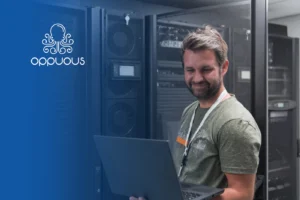As the world economy moves into a period of economic headwinds, CIOs must look to digital investment as a way to ensure continued growth and financial stability. Digital investments can provide repeatable financial and environmental benefits, while helping companies stay competitive in an ever-changing digital landscape. From artificial intelligence (AI) solutions that automate processes to cloud solutions that reduce costs, digital investments are becoming increasingly important for businesses looking to remain agile and resilient during times of economic uncertainty. By investing in digital technologies now, CIOs can create long-term value for their organizations – even through unpredictable economic conditions.
In order to achieve sustainable growth, CIOs must focus on digital investment during the recession in three key areas: revolutionary work for workforce empowerment, responsible spending that balances financial and environmental goals, and resilient cybersecurity measures. Gartner analysts at a recent IT Symposium emphasized this as an important step towards business transformation.
Despite the current economic recession, Mary Mesaglio of Gartner remains confident that digital investments can help CIOs make a difference. A survey from Gartner reveals that EMEA-based CIOs are expecting their IT budgets to rise by an average 4.4%, lower than the projected 6.5% global inflation rate – however digital investment could provide repeatable financial and environmental benefits in this time of crisis for those willing to take advantage of it.
As digital investment rises in importance, CIOs must leverage the technology to drive growth and reap financial and environmental rewards. The survey of over 2,000 respondents from 81 countries has revealed that cyber security (70%), business intelligence/data analytics (53%) cloud platforms (48%) artificial intelligence(34%), hyper-automation(24%) will be areas of increased spending for 2024.
Gartner has identified three ‘force multipliers’ that can help organizations become an employer of choice and create sustainable performance in the workplace. Utilizing these force multipliers will enable companies to reap financial and environmental rewards while providing a better experience for employees.
- CIOs are encouraged to leverage digital investment during these difficult economic times in order to achieve long-term, sustainable growth. Additionally, they can remove obstacles that impede employee performance and retention by investing in digital skills development – creating a more engaged workforce with the capabilities necessary for future success.
- As digital investment continues to be an essential part of business strategy during the recession, CIOs should focus on AI augmentation to ensure their workforce is equipped with cutting-edge tools that can maximize employee productivity and performance. With this approach, businesses will reap long-term financial and environmental rewards while also supporting sustainable growth.
- CIOs should leverage digital investment to stay ahead of the competition through challenging economic times. Gartner recommends experimenting with “highly visible and hyped” technologies, such as ‘intraverse’ which is a virtual office that incorporates metaverse technology for immersive meetings. This tech may take up to 10 years before reaching its peak on the Hype Cycle chart.
In the midst of a recession, CIOs have an incredible opportunity to leverage digital investment and revolutionize the workplace. Through collaboration between IT and HR departments, along with improved technology access for employees, businesses can create an unbeatable employee experience that will lead to increased retention rates. This strategy is expected to deliver both financial and environmental benefits in addition to growth potential – making digital investments during this time more important than ever before!
Reliable investment
As the economy takes center stage for C-suite executives, digital investments should be used to create sustainable growth that goes beyond just financial returns. Gartner’s VP analyst Daniel Sanchez-Reina suggests leveraging IT solutions to deliver repeatable results without taking on debt while being ethical and environmentally conscious at the same time.
Gartner has highlighted three force multipliers that can help deliver both financial and environmental gains – making digital investment an attractive option for businesses of all sizes.
- CIOs should consider digital investment in Intelligent Connected Infrastructure (ICI) as a means of driving economic growth, repeatable financial and environmental benefits. ICI is akin to an air traffic control system for smart city infrastructure, combining mesh fabric technology with AI, IoT, cloud computing analytics and edge computation capabilities that can share data from previously ‘silent’ components such as bridges, roads or ports. Investing in this innovative area will not only facilitate progress but also improve the lives of citizens worldwide.
- CIOs should tap into digital investments during the recession to generate growth, financial stability and environmental sustainability. Autonomous sourcing is a way for organizations to use AI, ML and NLP technologies that can provide access to larger supplier networks in an efficient manner while benefiting from sustainable profits.
- In a digital-first economy, CIOs have the opportunity to drive growth and generate repeatable financial and environmental benefits through digital investments. Gartner suggests implementing an Energy Management Optimization System (EMOS) that can reduce energy usage by up to 15%. Further cost savings are possible when combining microgrids with machine learning and artificial intelligence applications; selling any excess energy back into the grid.
CIOs should take advantage of digital investment during the recession to reap financial and environmental benefits. This two-for-one strategy would allow companies to satisfy their customers, employees, and investors while also taking into account sustainability concerns. Although this concept is gaining traction in some businesses today, it still remains uncertain when digital investments will become a common reality for most organizations.
Adaptable cybersecurity
In the midst of digital transformation and economic hardship, CIOs must leverage digital investments to achieve financial and environmental gains. At the same time, they must also be aware that this increased spending in security overcomes any potential risks from external threats such as Russia’s invasion of Ukraine. Gartner’s survey revealed that 88% of board directors now view cybersecurity as a business risk requiring new types of investment for an effective approach against cyberattacks.
Three force multipliers have been identified to help organizations maximize the power of digital investments in order to drive further success.
- Gartner recommends leveraging external attack surface management (EASM) to discover weaknesses in assets exposed externally, utilizing software composition analysis for visibility into supply chain vulnerabilities, and deploying threat intelligence platforms as a prioritization tool when addressing them.
- CIOs should prioritize digital investments that protect their business goals and customer needs. This will ensure the delivery of repeatable financial and environmental benefits while safeguarding outcomes for both sides in the long-term.
- To ensure success, organizations must measure outcomes using key metrics and create protection-level agreements that align with their risk appetite in order to build a roadmap for investments. Gartner is even providing benchmarks for 16 outcome-driven metrics (ODMs) that can be used by companies to compare their progress against competitors.
Want to learn more about this topic? Book some time with our Digital Experts to help deliver sustainable and consistent growth : https://letsmeet.io/oppuousllc/30-minute-consultation









